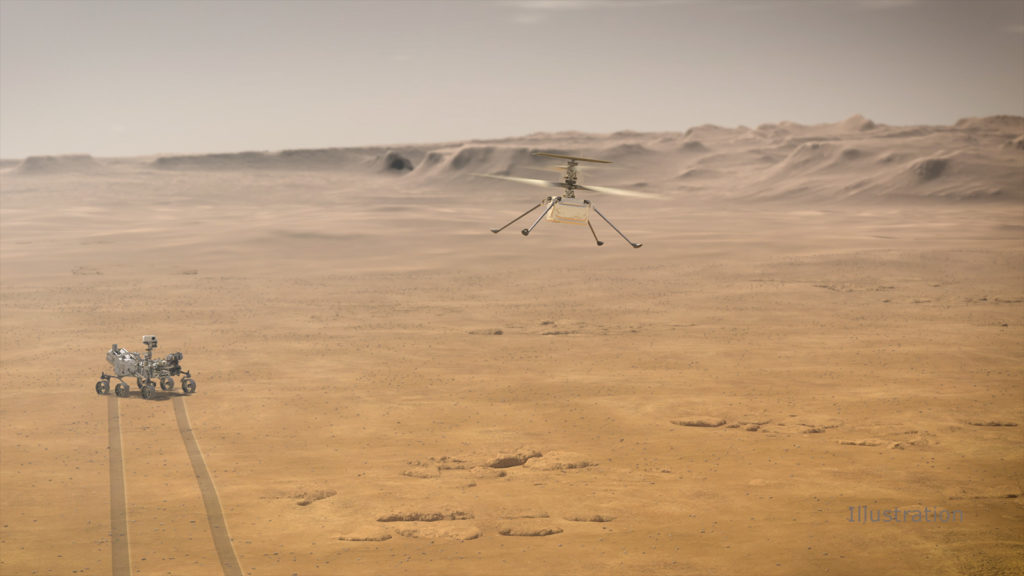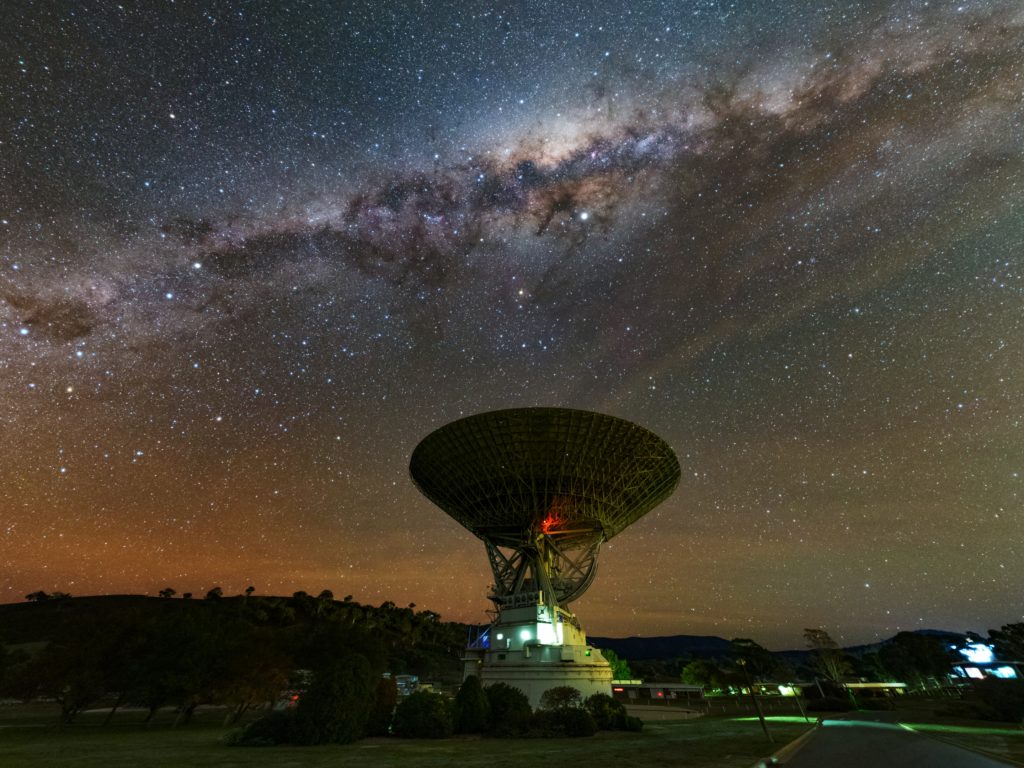It’s Mars time again!
In July 2020, three nations launched missions to the red planet – China, the United Arab Emirates (UAE) and the USA.
For China and the UAE, this was their first attempt at independently sending missions to Mars.
‘Al Amal’ or ‘Hope’ is the name of the UAE’s probe. The orbiting spacecraft is the first dedicated mission to provide unprecedented details on the planet’s climate and daily weather patterns.
China’s Tianwen-1 is a three-part spacecraft, with an orbiter, a lander and a rover. Like UAE’s Hope, Tianwen-1 entered Mars’ orbit in early February 2021.
In May, Tianwen-1 will release its lander and rover for a touchdown on the surface. From there they will be analysing rock and soil for evidence of water and potential indicators for life.
For the United States, their mission is the next in a long succession of NASA robotic rovers, orbiters and landers that have ventured to Mars over the past 20 years.
Perseverance and ingenuity

When NASA’s Ingenuity Mars Helicopter attempts its first test flight on the Red Planet, the agency’s Mars 2020 Perseverance rover will be close by, as seen in this artist’s concept. Credit: NASA/JPL-Caltech
The car-sized ‘Perseverance’ rover is the cousin to the ‘Curiosity’ rover that has been exploring Mars since 2012.
The landing target is Jezero Crater – once an ancient lake. Jezero Crater features a river channel that deposited sediments which fanned into a wide, but now dry, river delta system.
Mission scientists believe that this location offers some of the best opportunities to look for signs of past life on Mars.
Perseverance won’t be travelling alone. Tucked beneath the belly of the rover and deployed after landing is the first helicopter designed to operate on another planet.
‘Ingenuity’ will fly through the thin Martian atmosphere and investigate the terrain around the rover. It will be able to reach locations where the rover can’t traverse. A wi-fi link with Perseverance will relay images that can help identify driving areas beyond the rover’s ground view.

This map shows regions in and around Jezero Crater on Mars, the landing site of NASA’s Perseverance rover. The green circle represents the rover’s landing ellipse. NASA/JPL-Caltech/USGS/University of Arizona
Keeping in contact
Communication with spacecraft is all about location and timing.
To maintain the link between spacecraft and their Earth-bound scientists, you need a system of antenna tracking sites around the world.
Each of these antenna needs to be separated by 120° so they can cover the entire solar system 24/7.
The Perseverance and Hope missions are both being supported by the giant antennas at the Canberra Deep Space Communication Complex (CDSCC). We manage the complex on NASA’s behalf.
These facilities ensure that the mission team can relay commands to these distant explorers and get back the valuable data they collect.
Deep Space Station 43

The Canberra Deep Space Communication Complex (CDSCC).
CDSCC’s biggest dish is the 70-metre Deep Space Station 43 (DSS43). It has returned to service just in time to support these Mars missions.
Completing an 11-month overhaul in mid-February, DSS43 has new transmitters, power and water coolant systems and a variety of other engineering and safety upgrades. This will see the nearly 50-year-old antenna operating for many more decades to come.
With just a week to spare, DSS43 re-joins the rest of NASA’s Deep Space Network in time for Perseverance’s landing at 7:55am on Friday 19 February (AEDT). You can join with others around the world to watch it via NASA Live.
They say it’s all about timing – and we’re ready for Mars!


21st February 2021 at 10:55 pm
This is just fantastic! Well done everyone!